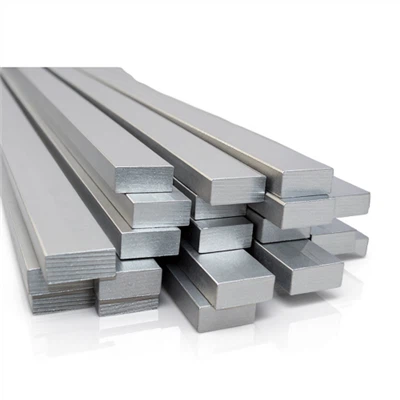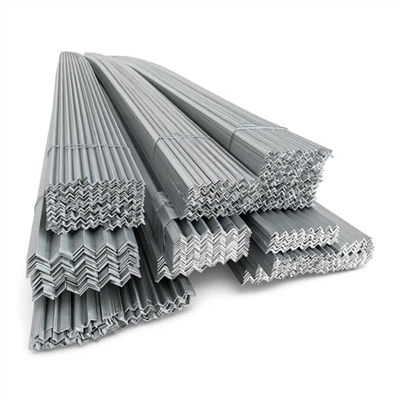Stainless steel flat bars are versatile and widely used in various industries due to their durability, corrosion resistance, and aesthetic appeal. As a supplier of stainless steel flat bars, I understand the importance of delivering products in pristine condition. Scratches on stainless steel flat bars not only affect their appearance but can also compromise their performance and longevity. In this blog post, I will share some practical tips on how to handle stainless steel flat bars to avoid scratches.
Understanding the Causes of Scratches
Before we delve into the handling techniques, it's essential to understand the common causes of scratches on stainless steel flat bars. Scratches can occur during various stages of the supply chain, including manufacturing, transportation, storage, and installation. Some of the primary causes of scratches include:
- Contact with Abrasive Surfaces: When stainless steel flat bars come into contact with rough or abrasive surfaces, such as concrete floors, metal tools, or other sharp objects, scratches can easily occur.
- Friction and Rubbing: During handling and transportation, stainless steel flat bars may rub against each other or other materials, causing friction and scratches.
- Improper Lifting and Handling: Using incorrect lifting equipment or techniques can result in scratches on the surface of the flat bars. For example, using hooks or chains that are too sharp or rough can damage the stainless steel.
- Environmental Factors: Exposure to harsh environmental conditions, such as dust, sand, or chemicals, can also cause scratches on stainless steel flat bars.
Handling Techniques to Avoid Scratches
Now that we understand the causes of scratches, let's explore some effective handling techniques to prevent them. These techniques can be applied at every stage of the supply chain, from manufacturing to installation.
Manufacturing and Packaging
- Use Protective Coatings: Apply a protective coating or film to the surface of the stainless steel flat bars during the manufacturing process. This coating acts as a barrier, preventing scratches and other damage during handling and transportation.
- Proper Packaging: Package the stainless steel flat bars carefully to protect them from scratches. Use padded or lined containers, and separate the bars with dividers or spacers to prevent them from rubbing against each other.
- Labeling and Identification: Clearly label the packages to indicate the type, size, and grade of the stainless steel flat bars. This helps to ensure that the bars are handled correctly and reduces the risk of damage.
Transportation
- Choose the Right Transport Method: Select a transportation method that minimizes the risk of scratches. For example, use trucks or trailers with smooth floors and padded walls to prevent the bars from rubbing against the vehicle.
- Secure the Load: Secure the stainless steel flat bars properly during transportation to prevent them from shifting or moving. Use straps, ropes, or other securing devices to hold the bars in place.
- Avoid Overloading: Do not overload the transportation vehicle, as this can increase the risk of scratches and other damage. Make sure that the weight of the load is evenly distributed and within the vehicle's capacity.
Storage
- Store in a Clean and Dry Environment: Store the stainless steel flat bars in a clean and dry environment to prevent corrosion and scratches. Avoid storing the bars in areas where they may come into contact with abrasive materials or chemicals.
- Use Proper Storage Racks: Use storage racks or shelves that are designed to hold stainless steel flat bars safely. The racks should have smooth surfaces and be padded to prevent scratches.
- Separate Different Grades and Sizes: Separate different grades and sizes of stainless steel flat bars to prevent them from rubbing against each other. This helps to reduce the risk of scratches and other damage.
Installation
- Use Protective Gear: Wear gloves and other protective gear when handling stainless steel flat bars to prevent scratches from your hands or tools.
- Use Soft Tools: Use soft tools, such as rubber mallets or plastic scrapers, when working with stainless steel flat bars. Avoid using sharp or hard tools that can damage the surface of the bars.
- Clean the Surface: Clean the surface of the stainless steel flat bars before installation to remove any dirt, dust, or debris. This helps to prevent scratches during the installation process.
Additional Tips for Avoiding Scratches
In addition to the handling techniques mentioned above, here are some additional tips for avoiding scratches on stainless steel flat bars:


- Inspect the Bars Regularly: Inspect the stainless steel flat bars regularly for scratches or other damage. If you notice any scratches, take immediate action to repair them to prevent further damage.
- Train Your Employees: Train your employees on the proper handling techniques for stainless steel flat bars. Make sure that they understand the importance of avoiding scratches and know how to handle the bars safely.
- Use a Scratch-Resistant Finish: Consider using a scratch-resistant finish on the stainless steel flat bars to provide an extra layer of protection. There are several types of scratch-resistant finishes available, such as powder coating or anodizing.
Conclusion
Handling stainless steel flat bars to avoid scratches requires careful planning and attention to detail. By following the tips and techniques outlined in this blog post, you can minimize the risk of scratches and ensure that your stainless steel flat bars arrive at their destination in pristine condition. As a supplier of stainless steel flat bars, I am committed to providing high-quality products and excellent customer service. If you have any questions or need further information about our Flat Bar Stock, 304 Stainless Steel Flat Bar, or 410 Stainless Steel Flat Bar, please feel free to contact us. We look forward to working with you and helping you meet your stainless steel flat bar needs.
References
- ASM International. (2000). Stainless Steels. Materials Park, OH: ASM International.
- Davis, J. R. (Ed.). (1994). Stainless Steel: ASM Specialty Handbook. Materials Park, OH: ASM International.
- Kauffman, G. B. (1996). Stainless Steel: Its History, Manufacture, and Applications. New York: Van Nostrand Reinhold.







